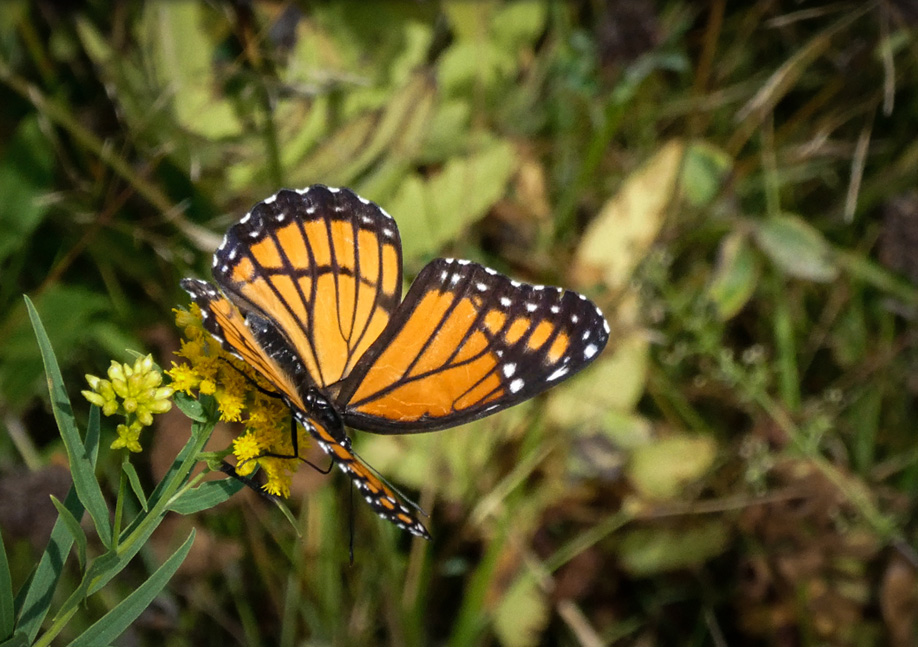
Viceroy Butterfly
by Jerry Schneider
HARDWICK – I take my dog up the hill in Hardwick every now and then. Today I was half way up and noticed the small field to the right that is often mowed. This morning it was flourishing with red clove and English Plantain and milkweed and Queen Anne’s lace and a white bulbous flower that attracts humming birds and sphinx moths and bees.
Wonderful! I thought that maybe the owner had read the same article I’d read a couple days earlier, in the business section of The New York Times. The one by Jane Margolis, about companies shifting away from manicured lawns, to a more wild, pollinator friendly, carbon absorbing look. Similar to the “No Mow May” thing that’s caught on in the Midwest and Eastern states, but on a much grander scale.
I paused and counted the bees and wasps, then headed up the hill.
According to the article, a number of larger companies are going more wild. Hewlett-Packard, for instance, replacing turf grass with native grasses and wildflowers that don’t suck water, but suck carbon dioxide instead. And the emissions just to care for those humungous emerald carpets! Did you know that landscaping equipment emits around 27 million tons of pollutants each year! Wow, think of all the bees those wildflowers might have fed! When Hewlett-Packard changed gears, it cut emissions by 90%.
Think about that. If I don’t mow, just let it go, then instead of being out there sweating and emitting, I could be reading a good book instead or having a beer and watching the buzzing wildlife across the road, or taking a stroll through it.
At my library programs, I do a pollinator program, and I tell folks, if you want to see more wild, you have to be more wild. My wife and I let a third of our lawn go. More bugs, bees, and birds that feed on the insects.
Well, by the time I came back down the hill with my dog, the guy with the lush little lot was on his riding mower, doing the first swathe across that field. Maybe neatness is a little too much in our genes?
I don’t ever see anybody in that field. No pick-up softball games, or picnicking. It just sits there. Maybe I’ll have a talk with him. He’s a good guy. Mention the climate crisis, how grasses and wildflowers absorb carbons and feed the bees.
Maybe hand him the Times article.




